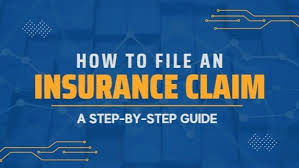Filing an insurance claim can feel stressful—especially when you’re already dealing with an accident, damage, or a medical emergency. The good news: the process is usually straightforward if you follow the right steps and keep your paperwork organized. This clear, step-by-step guide walks you through filing claims for common insurance types (health, auto, home, life) so you get paid quickly and avoid common mistakes.
Quick overview (what a claim is)
A claim is your formal request to the insurer asking them to pay for a covered loss under your policy. You submit evidence, the insurer reviews it, and — if the claim is valid — they pay out according to the policy terms.
Step 1 — Stay safe and collect immediate evidence
-
Ensure safety first. For accidents or emergencies, put safety and health first—call emergency services if needed.
-
Document the scene. Take clear photos and short videos of damage, injuries, or the accident scene from multiple angles. Capture dates, times, and location.
-
Gather witnesses. Get names and contact details of witnesses, if any. Their statements can help later.
-
File a police report when required. For theft, serious car accidents, or vandalism, file a police report and keep a copy or report number.
Step 2 — Notify your insurer quickly
-
Report the loss ASAP. Most policies require prompt notification. Check your policy for any specific timelines (e.g., within 24–72 hours).
-
Use the insurer’s preferred method. Many insurers accept phone, mobile app, online portal, or email. Use whatever channel they recommend to create an official record.
-
Get a claim/reference number. Always note the claim number and the name/ID of the agent you spoke with.
Step 3 — Read your policy and understand coverage
-
Locate your policy document. Review coverage limits, deductibles, exclusions, waiting periods, and claim procedures.
-
Identify what’s covered. Confirm whether the event is covered and if any riders/extras apply. This helps set realistic expectations.
Step 4 — Prepare and submit required documents
Common documents you’ll likely need:
-
Completed claim form (from insurer).
-
Identity proof (ID card, passport).
-
Policy number and insurance certificate.
-
Police report (if applicable).
-
Photos/videos of damage.
-
Medical reports, hospital bills, prescriptions (for health claims).
-
Repair estimates, invoices, ownership proofs (for car/home claims).
-
Death certificate and beneficiary documents (for life insurance).
Tip: Scan and keep digital copies. Submit them through the insurer’s portal or email as instructed. Keep originals safe.
Step 5 — Work with the claims adjuster
-
An adjuster may be assigned. They inspect damage, review documents, and estimate loss. Be cooperative and honest.
-
Provide additional information quickly. If the adjuster requests more documents, submit them fast to avoid delays.
-
Get written estimates. For property or vehicle repair, obtain at least one or two written repair estimates to submit.
Step 6 — Review the settlement offer
-
Understand the payment breakdown. Check how the insurer calculated the payout—deductible, depreciation, policy limits, and any co-pays.
-
Ask questions. If something is unclear, ask for a written explanation. Don’t accept an offer you don’t understand.
-
Negotiate if fair. If the estimate seems low, provide independent estimates or expert reports to support a higher settlement.
Step 7 — Receive payment and close the claim
-
Payment methods vary. Insurers may pay directly to you, the service provider (hospital, repair shop), or issue a cheque/transfer.
-
Keep records of payment. Save receipts and bank statements showing the deposit or cheque.
-
Confirm claim closure. Ask for written confirmation that the claim is closed and the file number for your records.
Common mistakes to avoid
-
Delaying notification to the insurer. That can be a ground for denial.
-
Providing incomplete or false info. Inaccuracies can void a claim.
-
Not taking photos immediately. Evidence fades—document the scene right away.
-
Accepting the first low offer without checking policy terms. Always compare the offer against your policy and evidence.
-
Missing deadlines for submitting documents or filing appeals.
Typical timelines (what to expect)
-
Acknowledgement / claim number: Usually within hours to 2 business days.
-
Adjuster inspection: Within a few days to a couple of weeks depending on severity.
-
Claim decision & payment: Simple claims may clear in days; complex ones may take weeks. (Check your insurer’s service-level commitments in the policy.)
When to escalate or get help
-
If your claim is unreasonably delayed or denied without explanation, ask for a written reason.
-
Use the insurer’s complaints / grievance process.
-
For unresolved disputes, contact your country’s insurance regulator or consider a consumer advocacy group or legal advice.
Final tips for a smoother claim
-
Keep a dedicated folder (digital + physical) for policy documents and previous claims.
-
Maintain an emergency contact list (agent, insurer hotline, repair shops).
-
Regularly review your coverage to ensure limits and beneficiaries are up to date.
-
For health claims, pre-authorize (cashless) whenever your policy allows.
